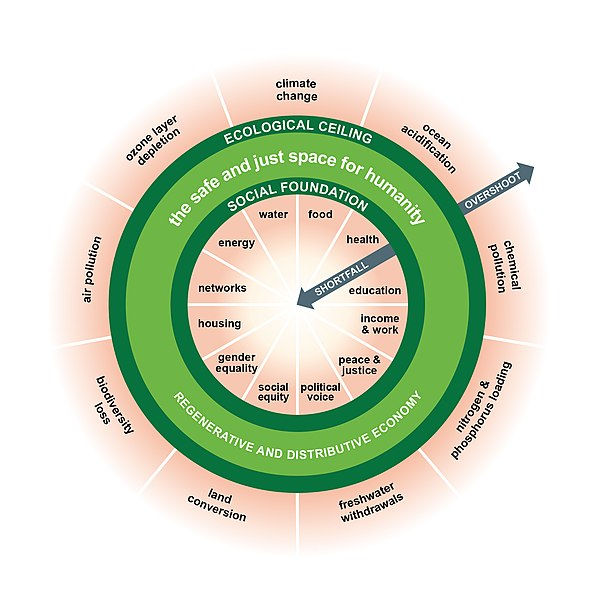Linus Lu
Policy Associate
Policy Associate
The definition of economics that I was taught in my introductory microeconomics class was simply, “the study of the allocation of scarce resources.”
The definition’s focus on scarce resources has led many to see endless growth as a positive – after all, “more is better.” But what does economics look like when resources are no longer scarce? And how do we react when increasing abundance is no longer the solution to the problem of scarcity, but instead creates intractable problems of its own, like environmental destruction and the fraying of community?
We need to update and rethink economics, and move towards a system that centers itself not on maximizing growth in an effort to overcome scarcity, but on creating a society that utilizes resources in a way that could continue for all future generations. A book that I read this summer, Doughnut Economics: Seven Ways to Think Like a 21st Century Economist, by Kate Raworth, offers such a vision.
The titular doughnut visualizes a new kind of economy, one that takes into account both the needs of society and ecological limits, instead of merely fantasizing about (impossibly) infinite growth.

Image via Wikimedia user DoughnutEconomics
Raworth argues that we must change the goal of our economic system from increasing GDP to creating a society that can provide enough materials and services for everyone while utilizing resources in a way that does not threaten our future security and prosperity. The doughnut visualizes this paradigmatic shift with its “social foundation” floor and ecological ceiling – the point at which “more” would be destructive to our planet and our health. Much of our economy and policy is aimed at pushing growth far beyond what is healthy and environmentally sustainable. Whether it’s single-use plastic, fossil fuels, or industrial pollution, the adverse effects of increasing production and consumption at any cost are clear to see.
This need to shift from a “more” perspective to a “smarter” or “cleaner” one connects with Raworth’s principles of advocating for an embedded economy and a regenerative economy.
An embedded economy is one that takes into account the social, environmental, and health impacts of economic activities. In effect, it enables us to see the economy as embedded within the larger social and ecological fabric. For example, our recent infrastructure white paper, Blueprint for Tomorrow, argues that public spending on infrastructure should take into account the potential social and environmental impacts of projects, and allocate money and investments into projects that are sustainable and that promote a healthy society. In an embedded economy, the cost of a gas-fired power plant would include all of the resulting costs of the project – including, for example, the healthcare costs resulting from increased air pollution. In our current system, these costs are “externalities” that aren’t included in the costs of production and consumption.
A regenerative economy – where what we produce and use up is put back into the system – is exemplified by the vision of a zero-waste society. The U.S. currently produces immense amounts of waste and landfills and incinerates most of it – including 95% of our food waste. Composting our food waste, grass clippings, and other organic waste and applying it to our soil would replenish it with nutrients and microbes, helping new food grow and creating a regenerative cycle.
To be sure, none of the principles laid out by Raworth are completely novel ideas; advocates and movements have pushed for policies that reflect those principles for decades. What the doughnut offers instead is a metaphor that brings them together and help us visualize an economic system that could create a prosperous society today and preserve a livable planet for all future generations.
Splash image: AJEL via Pixabay
Policy Associate
